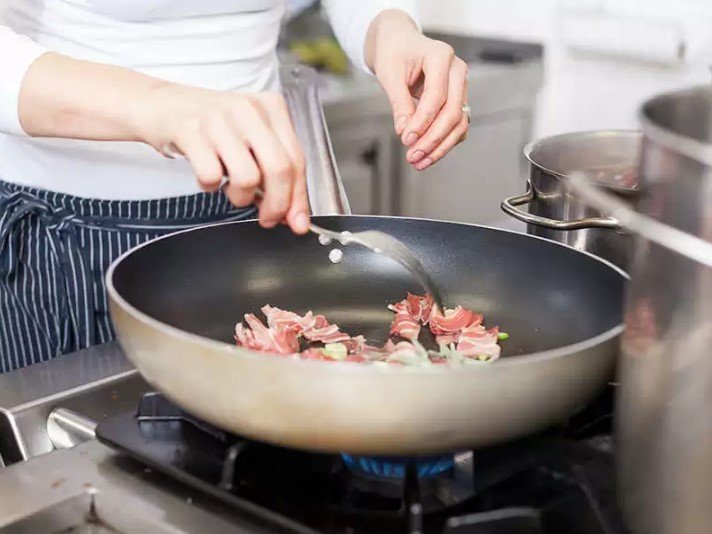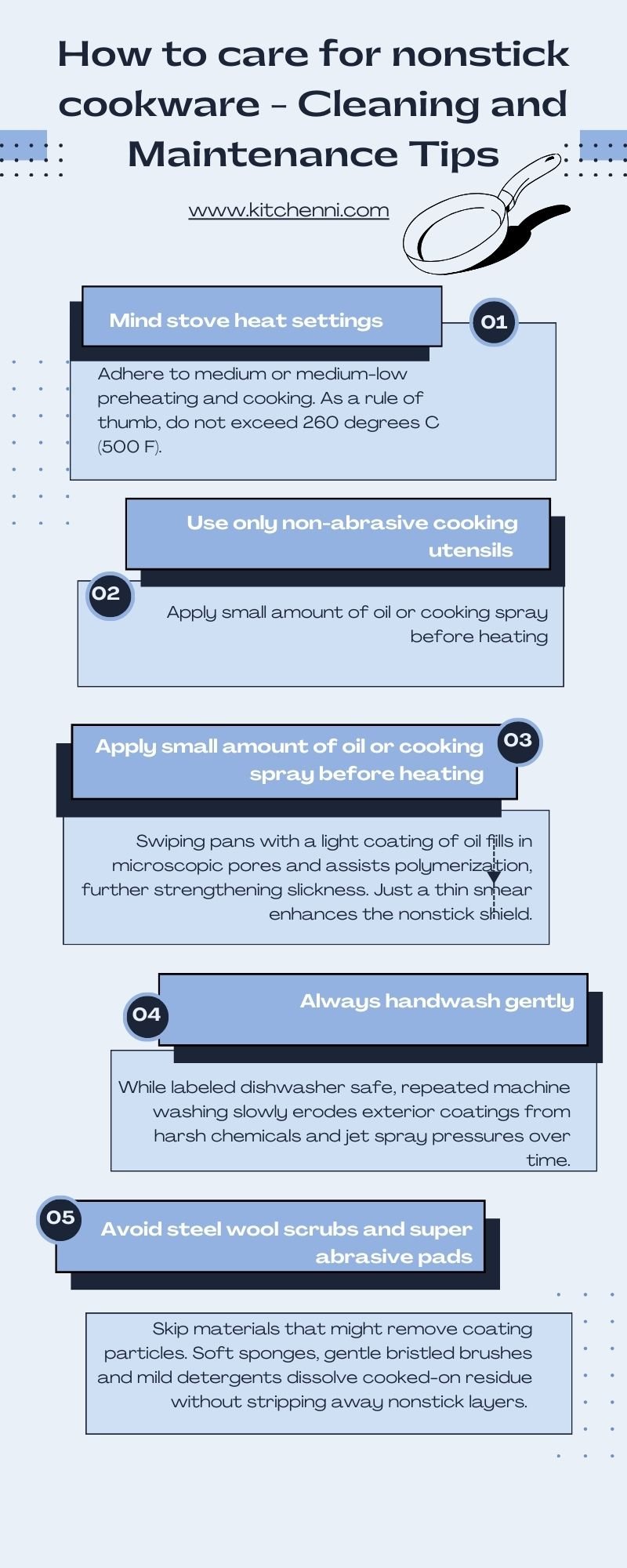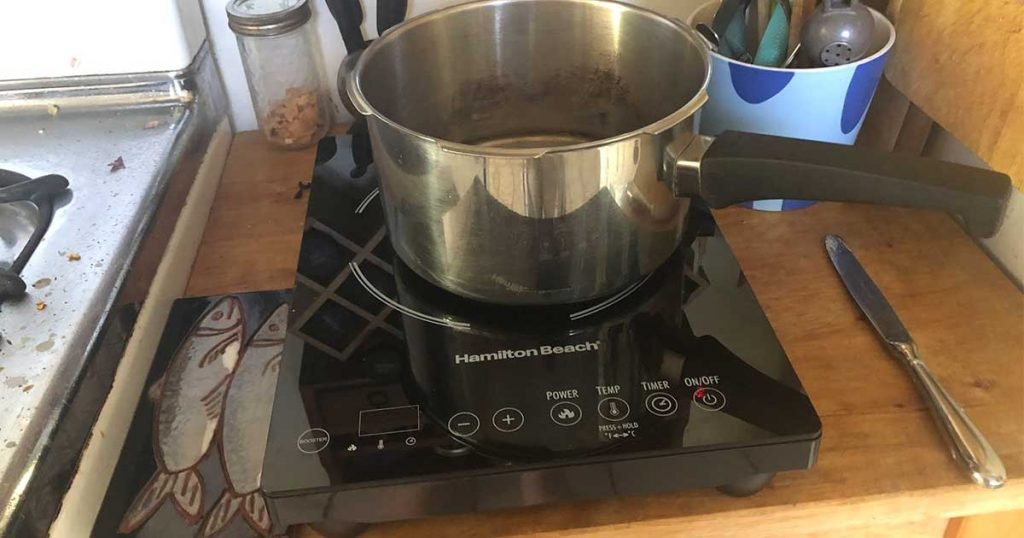You’ve bought a nice set of nonstick pots and pans. But to keep your cookware performing like new for years you have to take care of it properly. If you treat it right, it will deliver without needing a replacement for ages. Neglect it, and you’ll be stuck scraping burnt bits after just a few months.
Thankfully, a little diligence goes a long way in preserving flawless performance. We’ll look at the tips to care for nonstick properly and what you can do to extend its lifespan so it feels as smooth on Day 1000 as it did on Day 1
How to Care for Nonstick Cookware – Top Tips
How to care for nonstick cookware – Cleaning and Maintenance Tips Infographic
Caring properly for nonstick cookware is important to enhance durability and longevity. Here are some maintenance tips to follow while cooking and cleaning:
1. Mind Stove Heat Settings
Excessive high burner temperatures degrade nonstick coatings quicker by burning off protective polymers. Adhere to medium or medium-low preheating and cooking. As a rule of thumb, do not exceed 260 degrees C (500 F).
2. Use Only Non-abrasive Cooking Utensils
Never use metal spatulas, forks, or whisks as they scratch the surface. Instead, use silicone, wood, plastic, or heat-resistant nylon utensils that glide smoothly without damage.
3. Apply a Small Amount of Oil or Cooking Spray Before Heating
Swiping pans with a light coating of oil fills in microscopic pores and assists polymerization, further strengthening slickness. Just a thin smear enhances the nonstick shield.
4. Always Handwash Gently
While labeled dishwasher safe, repeated machine washing slowly erodes exterior coatings from harsh chemicals and jet spray pressures over time.
5. Avoid Steel Wool Scrubs and Super Abrasive Pads
Skip materials that might remove coating particles. Soft sponges, gentle bristled brushes, and mild detergents dissolve cooked-on residue without stripping away nonstick layers.
6. Thoroughly Dry Cookware Prior to Storage
Trapped moisture from improper drying corrodes cookware over time. Ensure 100% dryness before stacking pieces or Nesting lids. Prolonged wetness causes permanent damage.
How Much Temperature Should You Expose Your Nonstick Cookware?
Below is a table to serve as a guideline:
| Cookware Temperature, °F | Cookware Temperature, °C | Cooking Use |
|---|---|---|
| 212 | 100 | Boiling point for water |
| 325-400 | 163-204 | Normal range for baking cookies, cakes, etc. |
| 400-470 | 204-243 | Normal range for pan-frying meat |
| 450 | 232 | Roasting poultry or vegetables |
| 500-550 | 260-288 | Broiling* |
How to Clean Nonstick Pans and Pots – Step-by-Step
This is a tricky one. If you do it wrong, your nonstick will have scratches after the first watch – no matter the quality and the brand. To ensure you do it right, use the following steps to clean your nonstick pans and pots. They will return the favor for a long time:
- Allow the pan to fully cool after cooking – by letting it rest at room temperature instead of shocking it under cold tap water, you won’t worry about the coatings coming off after several uses. Sudden temperature shifts can degrade coatings.
- Rinse away initial top layer residue – With warm soapy water, start by rinsing away any residue. Use a saturated soft sponge in gentle circular strokes. Never start scrubbing aggressively before letting soap penetrate.
- Apply a thin layer of dish soap and fill scrubs directly onto stuck debris – Let it soak for 2-3 minutes, allowing surfactants in detergent to dissolve food bits without excessive elbow grease.
- Handwash the softened residue gently – Now wash the residue away, focusing on dissolving any last remnants without excess pressure that wears down exterior layers quicker. Rinse fully with warm water.
- Dry thoroughly – by hand immediately after washing, using soft microfiber or terry towels. Carefully check tight crevices and curved areas that trap hidden moisture. Missing damp spots can lead to permanent water damage over time.
Repeat this cleaning routine regularly. Just a few careful minutes to maintain flawless nonstick for the long haul!
How Often to Clean Nonstick Cookware
For lightly used nonstick pans, wash thoroughly by hand after every 2-3 uses, as smaller debris buildup gets harder to remove if neglected for too long. Even if pans look clean after cooking, stuck-on particles lead to etching underneath over time.
For heavy-duty daily usage, wash nonstick pans thoroughly by hand after EACH individual use. The slight extra effort pays off by preventing microscopic material from interacting chemically with coatings, inevitably stripping away nonstick layers much more quickly. Staying vigilant after every meal keeps pans glistening like day one!
The Dos and Don’ts of Maintaining Nonstick Cookware
As a rule of thumb, consider the following tips:
DO’s….
- Preheat on medium or medium-low settings
- Use soft silicone, wood, or plastic cooking utensils
- Apply light cooking spray or smear oil before heating empty pans
- Gently hand scrub with soft-bristled brushes
- Completely hand-dry cookware prior to any storage
DON’ts
- Exceed medium heat while cooking
- Use metal spatulas, tongs, or abrasive scouring scrubs
- Soak nonstick pans instead of promptly hand washing
- Run through intense dishwasher cycles over time
Bottom Line
With a little thoughtful adjustment and care, quality nonstick cookware can maintain its food-releasing excellence and visual appeal for years on end. Skip haphazard scrubbing, excess heat levels, and overnight sink baths. By keeping acidic foods in check and cleaning gently by hand, your cookware will deliver nonsense-free cooking indefinitely!
Common Questions
Can I put nonstick pans in the dishwasher?
Many are labeled dishwasher safe, but handwashing is still recommended. Repeated dishwashing can wear down nonstick coatings faster over time. But for occasional deeper cleans, quick dishwasher cycles are fine.
What is the black-speckled stuff on my nonstick pans?
Those tiny black dots over time likely indicate microscopic residual bits of oil polymerized onto the surface from cooking. These harmless specks don’t inhibit nonstick function. But avoid abrasive scrubbing and instead, clean more diligently moving forward.
Are darker spots stain damage?
Certain ingredients can stain and discolor patches inside pans but may not degrade nonstick itself unless not cleaned promptly. Prevent stains by fully cleaning after each use.
Can I revive an old scratched nonstick pan?
Unfortunately, once scratched, specialized coatings can’t be repaired or reapplied. But you can prolong lifespan by cooking gently on medium heat with extra oil while saving up for an eventual replacement.




